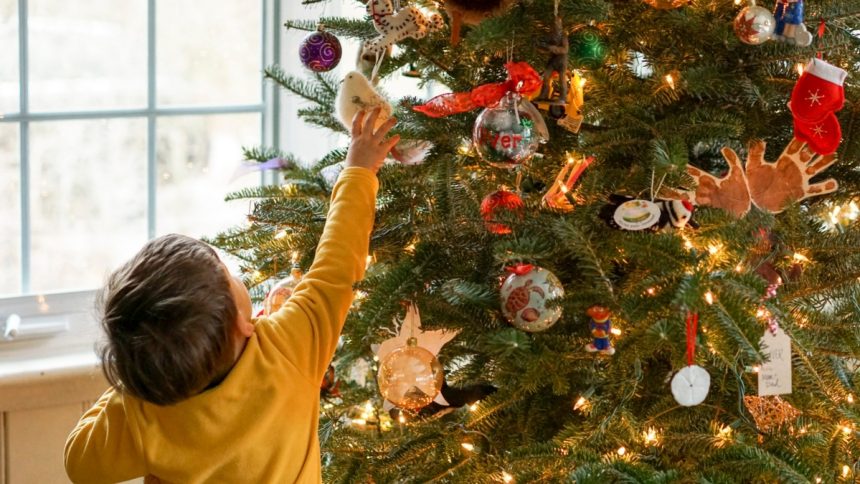Today, everyone knows the benefits of trees and why you shouldn’t cut down trees. However, you might be wondering, what about Christmas trees? Is cutting down Christmas trees eco-friendly? Which Christmas trees are better for the environment, real or fake?
Well, answering such complex questions requires some familiarity with the lifecycle of a Christmas tree, whether real or fake. Both options require huge amounts of resources and land but in different ways.
The real, natural Christmas trees are grown on different farms across the country. The trees are grown to about 6.5 feet before harvest, through a process that typically takes 12 years and plenty of nutrients and water. When fully grown, the trees are harvested and shipped to retailers. Most people buy the trees during the early holiday season and keep them until the end of the year. The tree must then be disposed of.
On the other hand, artificial Christmas trees are meant to last anywhere between 5 to 10 years. The trees are made from plastic and metal, meaning that the manufacturing process requires significant energy and causes considerable levels of pollution.
Around 80% of the global fake Christmas trees are produced in China, which translates into long journeys before reaching the retailers. The finished products are transported by trucks from the factories to the nearest post, where they are then shipped to the U.K. and other destinations. From there, the trees are transported to retailers across the country by trucks.
Are Fake Christmas Trees Better for the Environment?
No. If well cared for, fake Christmas trees can last for many years, which seems to make them the obvious choice for sustainability. However, they do have their drawbacks. Since most of them are made from plastic and metallic materials, they need a lot of resources to create. The plastic components will also exist for thousands of years, which could pollute the environment.
They also have a high carbon footprint, estimated at 88 lbs of CO2 per fake tree, which is 10x more than that of sustainably grown, real Christmas trees. You may need to keep your fake tree for at least 10 years for it to have the same carbon impact as a real tree every year, without considering the environmental damage the fake tree will cause as it slowly breaks down in a landfill.
Why are Real Christmas Trees Better?
For starters, real trees don’t require the significant carbon emissions it takes to produce and ship artificial ones. It might appear counter-intuitive, but it’s a lot more sustainable to cut down a real tree every year. This is because most small-scale Christmas tree farms tend to be inherently sustainable, as they leave certain sections open for harvesting each year while keeping other sections closed off to give the younger trees a chance to grow.
On average, it takes 7 years for a Christmas tree to grow. As they do, they help absorb carbon and will use 10 times fewer resources compared to fake trees. Plus, for every tree that is cut down, an average of 1 to 3 new seedling trees are planted. According to vividedge.ie, this rotation cycle helps ensure a steady supply of trees each year, while also providing a habitat for wildlife.
Keep in mind that many Christmas tree growers use steep hillsides that would otherwise be unsuitable for other agricultural activities. As such, most Christmas tree farms are both sustainable and ethical and are great for the people who live and work on them. And unlike fake Christmas trees, real trees are biodegradable and can be used for lumber, donated to restoration projects, turned into mulch, or composted and used as fertilizer.
Not all Real Christmas Trees Have the Same Impact
Unfortunately, it’s worth pointing out that there are still bad actors out there who cut trees from primary forests. However, if you’re willing to spend a little time on research, you will likely find a small tree farm near you where you can see exactly where the trees are grown and processed.
How the trees are disposed of is also important. If a real tree is left in a landfill or used for other purposes, it doesn’t break down quickly, if at all. It essentially retains its stored carbon, which keeps more CO2 from the atmosphere. If the tree is composted, some of the carbon will be broken down by the soil bacteria. However, if the tree is burned, almost all the carbon stored in the tree is released, which is certainly bad for the environment.
But Shouldn’t People Avoid Cutting Down Trees?
Yes. But science shows the best way to protect forests is by using them carefully. When forests are managed sustainably, they can easily produce renewable resources like Christmas trees and other essential wooden products. Sustainable forests store as much carbon as unmanaged forests, which makes innovative forest management methods, such as sustainable Christmas tree farming, an important solution to fighting climate change.
Lynn Martelli is an editor at Readability. She received her MFA in Creative Writing from Antioch University and has worked as an editor for over 10 years. Lynn has edited a wide variety of books, including fiction, non-fiction, memoirs, and more. In her free time, Lynn enjoys reading, writing, and spending time with her family and friends.















